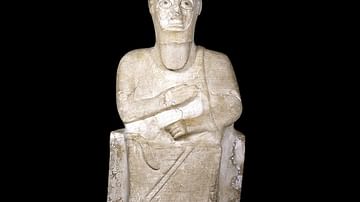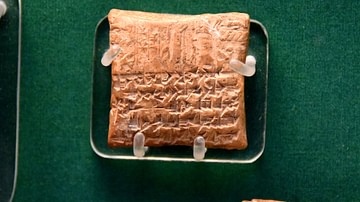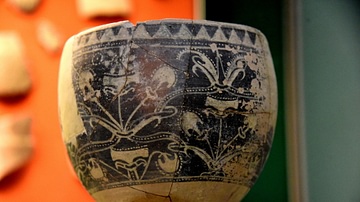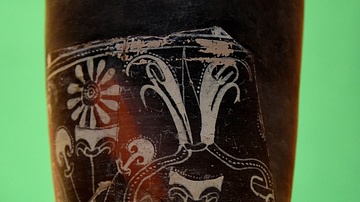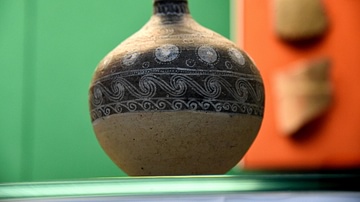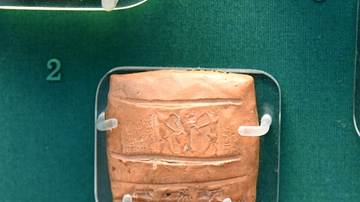Illustration
The associated cuneiform inscription tell the interesting story of this king. Following a popular revolt, Idrimi was forced to go into exile. Together with his mother's family, he went 1st to Emar (Meskene on the Euphrates), and then to Canaan where he joined other refugees from Syria and lived with Habiru (homeless or dispossessed people of various ethnic origins). Seven years later, he mounted an expedition by ship and recaptured the district of Mukish and was acclaimed king of Alalakh. There, he extended the kingdom and set to work rebuilding the royal palace. It seems likely, however, that this work was completed by his son, Niqmepa, whose temple and palace complex constitued Stratum IV. From level V, Tell Atchana, Hatay, Turkey. Circa 1570-1500 BCE. (The British Museum, London)
About the Author
Cite This Work
APA Style
Amin, O. S. M. (2016, April 10). Statue of Idrimi of Alalakh. World History Encyclopedia. Retrieved from https://www.worldhistory.org/image/4874/statue-of-idrimi-of-alalakh/
Chicago Style
Amin, Osama Shukir Muhammed. "Statue of Idrimi of Alalakh." World History Encyclopedia. Last modified April 10, 2016. https://www.worldhistory.org/image/4874/statue-of-idrimi-of-alalakh/.
MLA Style
Amin, Osama Shukir Muhammed. "Statue of Idrimi of Alalakh." World History Encyclopedia. World History Encyclopedia, 10 Apr 2016. Web. 14 Apr 2025.



